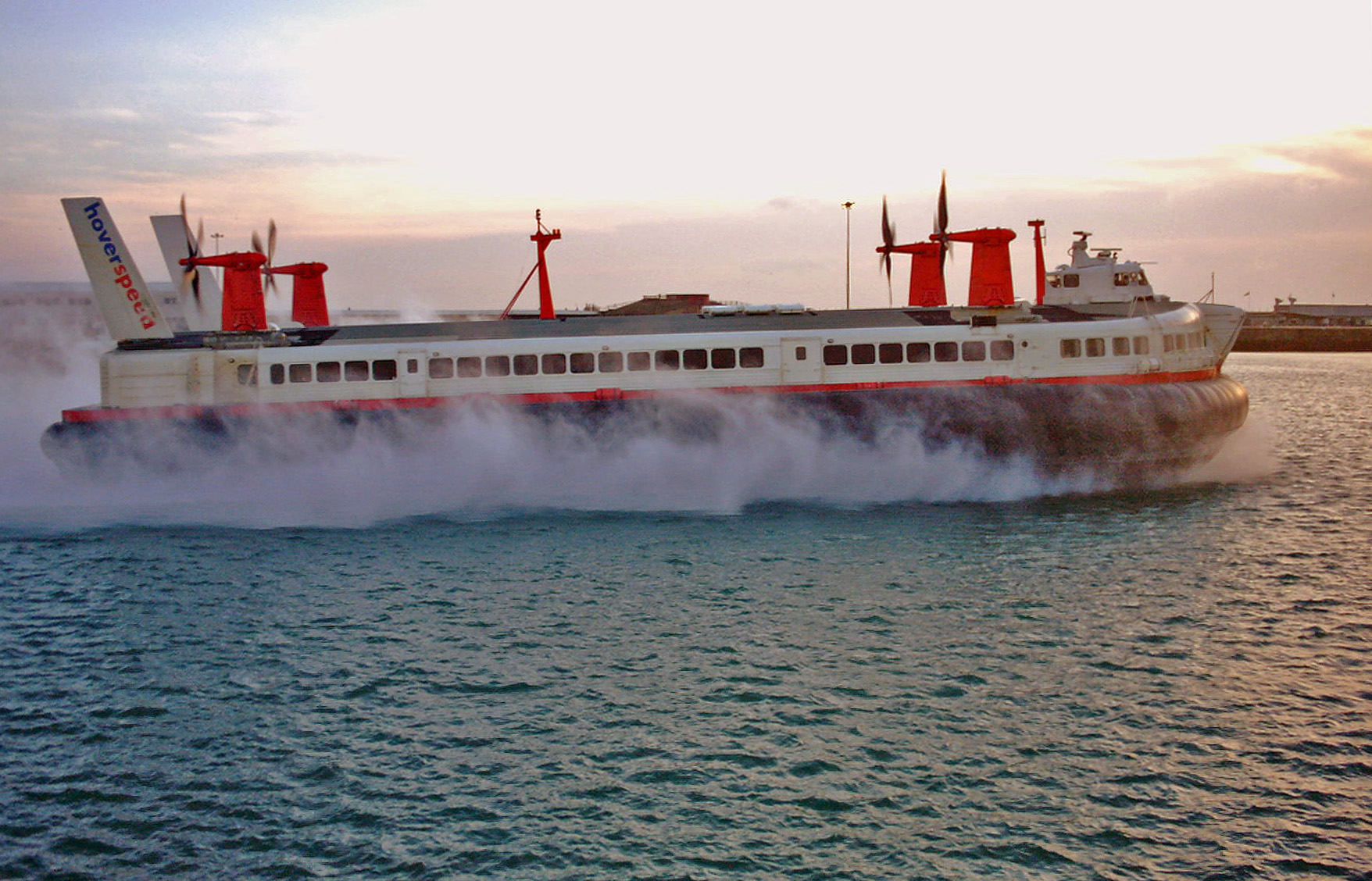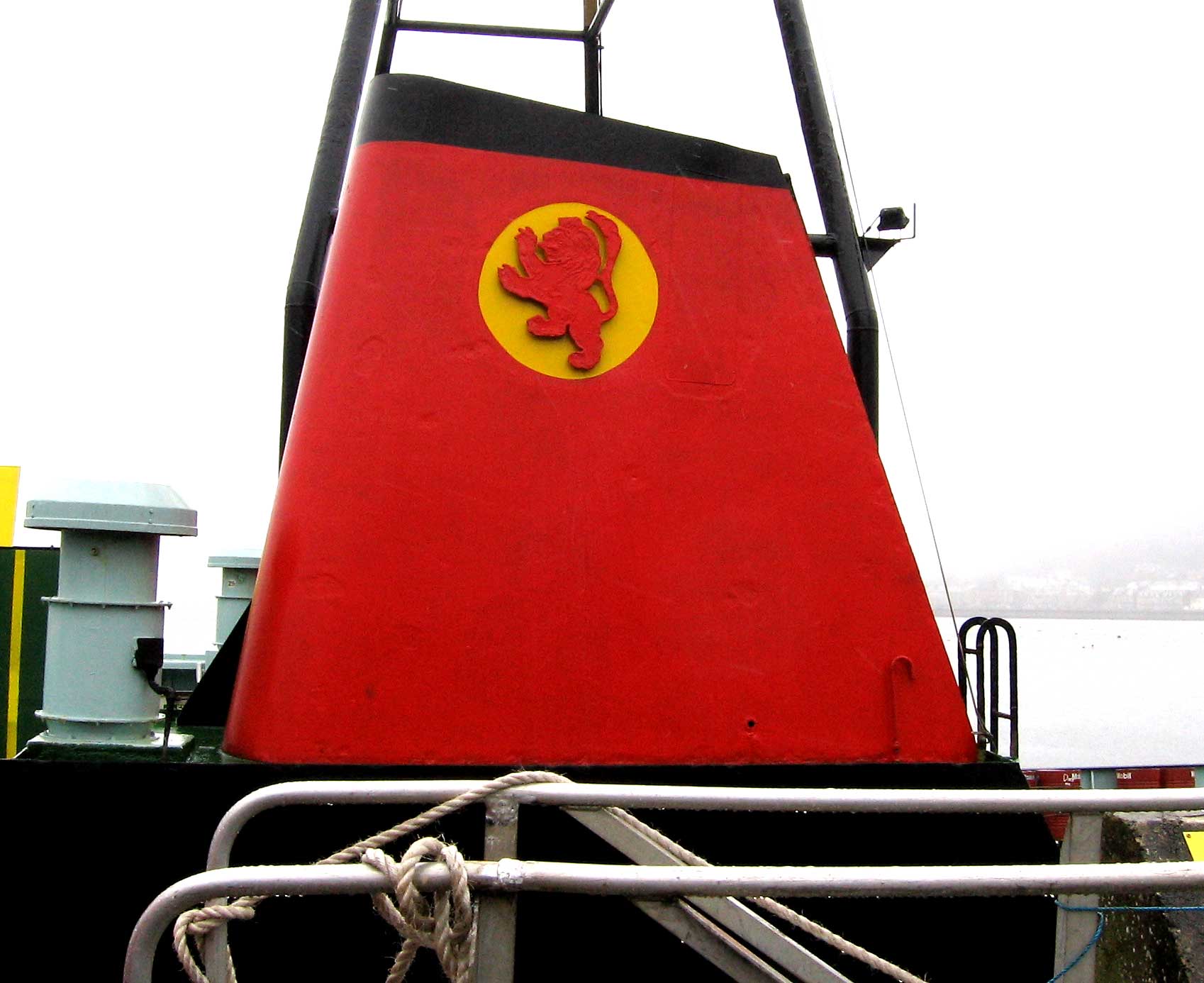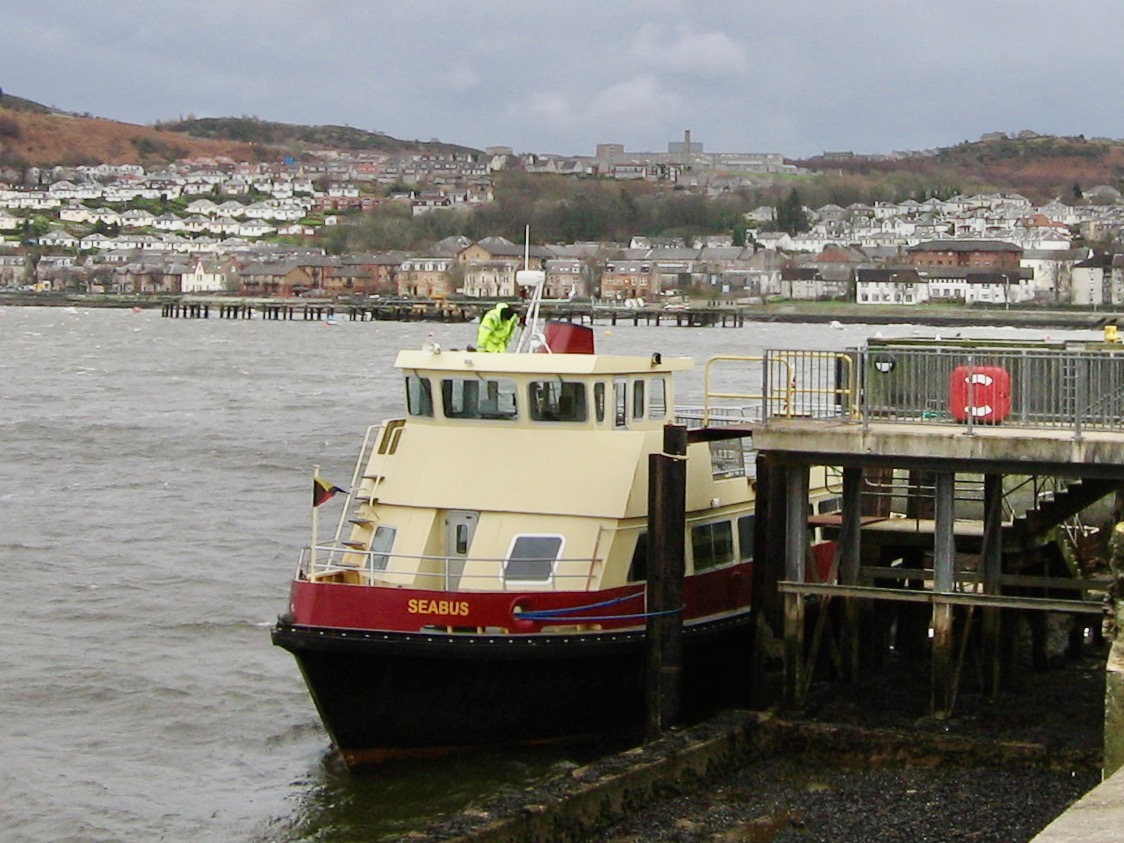|
MV Cruiser
''Cruiser'' is a passenger vessel owned by Clyde Marine Services Ltd operating in the River Clyde as part of the company's charter cruise fleet. Her former names are ''Southsea Queen'', ''Hythe Hotspur'' and ''Poole Scene''. History ''Southsea Queen'' was built in 1974 by James & Stone of Brightlingsea for the Gosport Ferry Company for cruising and standby ferry duties. She was similar to ''Solent Enterprise'', from the same shipyard but with a flared pointed bow. However, at 119 GRT she proved too small for her job and just four years later was sold to White Horse Ferries for use on its Hythe Ferry service. She was renamed ''Hythe Hotspur'' and repainted from her green with red band livery to a red and white livery. She was withdrawn from this service in 1995 and chartered to Brownsea Island Ferries Ltd for service in Poole Harbour. She initially kept the name ''Hythe Hotspur'' but was later sold to Blue Funnel Cruises in 1997 and renamed ''Poole Scene''. She sailed from Po ... [...More Info...] [...Related Items...] OR: [Wikipedia] [Google] [Baidu] |
United Kingdom
The United Kingdom of Great Britain and Northern Ireland, commonly known as the United Kingdom (UK) or Britain, is a country in Europe, off the north-western coast of the continental mainland. It comprises England, Scotland, Wales and Northern Ireland. The United Kingdom includes the island of Great Britain, the north-eastern part of the island of Ireland, and many smaller islands within the British Isles. Northern Ireland shares a land border with the Republic of Ireland; otherwise, the United Kingdom is surrounded by the Atlantic Ocean, the North Sea, the English Channel, the Celtic Sea and the Irish Sea. The total area of the United Kingdom is , with an estimated 2020 population of more than 67 million people. The United Kingdom has evolved from a series of annexations, unions and separations of constituent countries over several hundred years. The Treaty of Union between the Kingdom of England (which included Wales, annexed in 1542) and the Kingdom of Scotland in 170 ... [...More Info...] [...Related Items...] OR: [Wikipedia] [Google] [Baidu] |
Southampton
Southampton () is a port city in the ceremonial county of Hampshire in southern England. It is located approximately south-west of London and west of Portsmouth. The city forms part of the South Hampshire built-up area, which also covers Portsmouth and the towns of Havant, Waterlooville, Eastleigh, Fareham and Gosport. A major port, and close to the New Forest, it lies at the northernmost point of Southampton Water, at the confluence of the River Test and Itchen, with the River Hamble joining to the south. Southampton is classified as a Medium-Port City . Southampton was the departure point for the and home to 500 of the people who perished on board. The Spitfire was built in the city and Southampton has a strong association with the ''Mayflower'', being the departure point before the vessel was forced to return to Plymouth. In the past century, the city was one of Europe's main ports for ocean liners and more recently, Southampton is known as the home port of some of ... [...More Info...] [...Related Items...] OR: [Wikipedia] [Google] [Baidu] |
Ferries Of Scotland
A ferry is a ship, watercraft or amphibious vehicle used to carry passengers, and sometimes vehicles and cargo, across a body of water. A passenger ferry with many stops, such as in Venice, Italy, is sometimes called a water bus or water taxi. Ferries form a part of the public transport systems of many waterside cities and islands, allowing direct transit between points at a capital cost much lower than bridges or tunnels. Ship connections of much larger distances (such as over long distances in water bodies like the Mediterranean Sea) may also be called ferry services, and many carry vehicles. History In ancient times The profession of the ferryman is embodied in Greek mythology in Charon, the boatman who transported souls across the River Styx to the Underworld. Speculation that a pair of oxen propelled a ship having a water wheel can be found in 4th century Roman literature "''Anonymus De Rebus Bellicis''". Though impractical, there is no reason why it could not work ... [...More Info...] [...Related Items...] OR: [Wikipedia] [Google] [Baidu] |
Ferries Of England
A ferry is a ship, watercraft or amphibious vehicle used to carry passengers, and sometimes vehicles and cargo, across a body of water. A passenger ferry with many stops, such as in Venice, Italy, is sometimes called a water bus or water taxi. Ferries form a part of the public transport systems of many waterside cities and islands, allowing direct transit between points at a capital cost much lower than bridges or tunnels. Ship connections of much larger distances (such as over long distances in water bodies like the Mediterranean Sea) may also be called ferry services, and many carry vehicles. History In ancient times The profession of the ferryman is embodied in Greek mythology in Charon, the boatman who transported souls across the River Styx to the Underworld. Speculation that a pair of oxen propelled a ship having a water wheel can be found in 4th century Roman literature "''Anonymus De Rebus Bellicis''". Though impractical, there is no reason why it could not work ... [...More Info...] [...Related Items...] OR: [Wikipedia] [Google] [Baidu] |
MV Clyde Clipper
MV ''Clyde Clipper'' is a cruise boat, a purpose built catamaran with a capacity of around 250 passengers and facilities for weddings, functions and corporate hospitality, including bar and catering facilities. She was built by Abels Shipbuilders of Bristol in 2009. From 30 June 2011 it was leased by Argyll Ferries Ltd as an interim ferry on the Gourock-Dunoon Dunoon (; gd, Dùn Omhain) is the main town on the Cowal peninsula in the south of Argyll and Bute, Scotland. It is located on the western shore of the upper Firth of Clyde, to the south of the Holy Loch and to the north of Innellan. As well ... service, covering the service along with the until the 244 passenger ferry was converted from the ten-year-old ''Banrion Chonamara'' of the Irish Aran Island Service. References 2009 ships Ferries of Scotland {{ferry-stub ... [...More Info...] [...Related Items...] OR: [Wikipedia] [Google] [Baidu] |
Calmac
Caledonian MacBrayne ( gd, Caledonian Mac a' Bhriuthainn), usually shortened to CalMac, is the major operator of passenger and vehicle ferries, and ferry services, between the mainland of Scotland and 22 of the major islands on Scotland's west coast. Since 2006, the company's official name has been CalMac Ferries Ltd, although it still operates as Caledonian MacBrayne. In 2006, it also became a subsidiary of holding company David MacBrayne, which is owned by the Scottish Government. History David MacBrayne MacBrayne's, initially known as David Hutcheson & Co., began in 1851 as a private steamship operator when G. and J. Burns, operators of the largest of the Clyde fleets, decided to concentrate on coastal and transatlantic services and handed control of their river and Highland steamers to a new company in which Hutcheson, their manager of these services, became senior partner. One of the other partners was David MacBrayne (1817-1907), nephew of Messrs. Burns. In 1878, the ... [...More Info...] [...Related Items...] OR: [Wikipedia] [Google] [Baidu] |
MV Chieftain
MV ''Chieftain'', ex-''Seabus'', is a passenger ferry built in 2007 for Clyde Marine Services to run the Strathclyde Partnership for Transport (SPT) Gourock to Kilcreggan service on the Firth of Clyde. From 2012 to 2018 the service was run by Clydelink with a smaller boat, while ''Seabus'' carried out cruises or other work and was renamed ''Chieftain''. After dissatisfaction with Clydelink, the contract went in May 2018 to Clyde Marine, and ''Chieftain'' returned to the Kilcreggan service. In June 2020 CalMac took over managing the service from SPT, leasing ''Chieftain'' which in 2021 was repainted in CalMac livery. History MV ''Seabus'' was built in Cornwall, in 2007, as a 'dedicated' passenger ferry to replace the 71-year-old on the service between Gourock, Kilcreggan and Helensburgh, across the Firth of Clyde (Tail of the Bank). Owned by Clyde Marine, ''Seabus'' operated the main ferry service to Kicreggan, with crossings of Gare Loch to Helensburgh, for the Strathclyd ... [...More Info...] [...Related Items...] OR: [Wikipedia] [Google] [Baidu] |
Strathclyde Partnership For Transport
Strathclyde Partnership for Transport (SPT) is a regional transport partnership for the Strathclyde area of western Scotland. It is responsible for planning and coordinating regional transport, especially the public transport system in the area, including responsibility for operating the Glasgow Subway, the third oldest in the world. History The principal predecessor to SPT was the Greater Glasgow Passenger Transport Executive (GGPTE) set up in 1972 to take over the Glasgow Corporation's public transport functions and to co-ordinate public transport in the Clyde Valley. In the 1980s it was replaced by the Strathclyde Passenger Transport Executive (SPTE), under the overall direction of Strathclyde Regional Council. Section 40 of the Local Government etc. (Scotland) Act 1994 created a new ''statutory corporation'', the Strathclyde Passenger Transport Authority (SPTA), which took over "''all of the functions, staff, property, rights, liabilities and obligations of Strathclyde Re ... [...More Info...] [...Related Items...] OR: [Wikipedia] [Google] [Baidu] |
Kilcreggan
Kilcreggan (Scottish Gaelic: ''Cille Chreagain'') is a village on the Rosneath peninsula in Argyll and Bute, West of Scotland. It developed on the north shore of the Firth of Clyde at a time when Clyde steamers brought it within easy reach of Glasgow at about 25 miles (40 km) west of the centre of Glasgow by boat. Many Glasgow shipowners and merchants made their summer retreats or even permanent residences there, and this is reflected in some very grand houses along the shore. Not all have remained occupied; some were demolished and others have been converted into flats. Its location at the end of the Rosneath peninsula, between the Gare Loch and Loch Long, makes the journey 38 miles (61 km) by road. The B833 minor road runs along the shore for the length of the village then cuts north inland just to the east of Kilcreggan pier rather than going east along the shore past Portkil Bay to Rosneath Point. About 2 miles (3 km) north of Kilcreggan the ... [...More Info...] [...Related Items...] OR: [Wikipedia] [Google] [Baidu] |
Gourock
Gourock ( ; gd, Guireag ) is a town in the Inverclyde council area and formerly a burgh of the County of Renfrew in the west of Scotland. It was a seaside resort on the East shore of the upper Firth of Clyde. Its main function today is as a residential area, extending contiguously from Greenock, with a railway terminus and ferry services across the Clyde. History The name Gourock comes from a Gaelic word for "pimple", in reference to the hill above the town. As far back as 1494 it is recorded that James IV sailed from the shore at Gourock to quell the rebellious Highland clans. Two hundred years later William and Mary granted a Charter in favour of Stewart of Castlemilk which raised Gourock to a Burgh of Barony. In 1784 the lands of Gourock were purchased by Duncan Darroch, a former merchant in Jamaica. He built Gourock House near the site of the castle in what the family eventually gifted to the town as Darroch Park, later renamed by the council as Gourock Park. From a sma ... [...More Info...] [...Related Items...] OR: [Wikipedia] [Google] [Baidu] |
Firth Of Clyde
The Firth of Clyde is the mouth of the River Clyde. It is located on the west coast of Scotland and constitutes the deepest coastal waters in the British Isles (it is 164 metres deep at its deepest). The firth is sheltered from the Atlantic Ocean by the Kintyre peninsula, which encloses the outer firth in Argyll and Ayrshire. The Kilbrannan Sound is a large arm of the Firth of Clyde, separating the Kintyre Peninsula from the Isle of Arran. Within the Firth of Clyde is another major island – the Isle of Bute. Given its strategic location at the entrance to the middle and upper Clyde, Bute played a vital naval military role during World War II. Geography At its entrance, the firth is about wide. At one area in its upper reaches, it is joined by Loch Long and the Gare Loch. This area includes the large anchorage off of Greenock that is known as the Tail of the Bank. (The “Bank” is a reference to the sandbank and shoal that separates the firth from the estuary of the Ri ... [...More Info...] [...Related Items...] OR: [Wikipedia] [Google] [Baidu] |
Greenock
Greenock (; sco, Greenock; gd, Grianaig, ) is a town and administrative centre in the Inverclyde council areas of Scotland, council area in Scotland, United Kingdom and a former burgh of barony, burgh within the Counties of Scotland, historic county of Renfrewshire (historic), Renfrewshire, located in the west central Lowlands of Scotland. It forms part of a contiguous urban area with Gourock to the west and Port Glasgow to the east. The United Kingdom Census 2011, 2011 UK Census showed that Greenock had a population of 44,248, a decrease from the 46,861 recorded in the United Kingdom Census 2001, 2001 UK Census. It lies on the south bank of the Clyde at the "Tail of the Bank" where the River Clyde deepens into the Firth of Clyde. History Name Place-name scholar William J. Watson wrote that "Greenock is well known in Gaelic as Grianáig, dative of grianág, a sunny knoll". The Scottish Gaelic place-name ''Grianaig'' is relatively common, with another (Greenock) near Calla ... [...More Info...] [...Related Items...] OR: [Wikipedia] [Google] [Baidu] |









